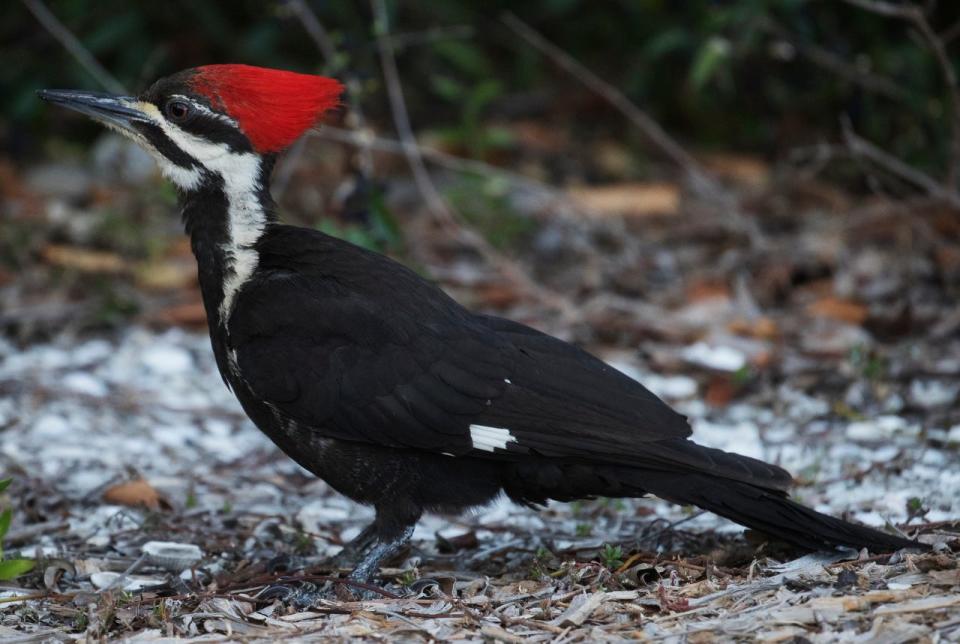Field notes: Is the ivory-billed woodpecker really extinct?; plus new snook rules
The avian world is buzzing with excitement after a video published last week appears to show ivory-billed woodpeckers, birds long thought extinct.
The video was taken in 2022 in Louisiana, and members of a peer review group has dismissed the sighting as another in a line of mistaken identity.
Still, bird enthusiasts hold out hope.
Ivory-billed woodpeckers (Campephilus principalis) once lived in South Florida, and there's always been a few people who've held hope that the bird is still somewhere in the millions of acres of land and water that make up Everglades National Park and the Big Cypress National Preserve.
Once found in Arkansas, Florida, Georgia, Illinois, Kentucky, Louisiana, Mississippi, Missouri, North Carolina, Oklahoma, South Carolina, Tennessee and Texas, the bird's habitat shrank as old-growth forests were cleared across the Southeastern United States.
Many ornithologists considered the species extinct more than a century ago, but the U.S. Fish and Wildlife Service made that declaration official in 2022, removing the bird from protections under the Endangered Species Act.

At an overall length of 20 inches and a wingspan of 31 inches, ivory-billed woodpeckers are large when compared to other woodpeckers, even the common pileated version.
"The ivory-billed woodpecker is noted for its striking black-and-white plumage; robust white, chisel-tipped bill; lemon-yellow eye; and pointed crest," a U.S. Fish and Wildlife Service website reads. "Males are red from the nape to the top of their crest with black outlining the front of the crest."
The video shows several large birds flying through the tree canopy. In flight, the birds show much more white coloration than a pileated woodpecker would.

The last reliable account of an ivory-billed woodpecker was east of Little Rock in 1944. The only other video of ivory-billed woodpeckers was captured in northeast Louisiana in 1935 and is now part of the Cornell Lab of Ornithology collection.
Locally, the lore of the ivory-billed woodpecker still lives on in the minds of Everglades enthusiasts like Franklin Adams, a retired Everglades City fishing guide who now lives in Golden Gate.
"That's incredible because we just figured they were extinct," said Adams, who was among a group of people who raised the initial $40 million to purchase the Big Cypress lands. "In the 1920s a biologist was studying what we called Thickahatchee Swamp (Fakahatchee Strand Preserve State Park) at the time. He thought there were more ivory-billed woodpeckers here than on the Singer tract. The last sighting, I think, here was near Deep Lake, I think that was in the '40s."
The Singer tract was an area in Louisiana known to have a substantial population of ivory-billed woodpeckers a century ago.
September could be trimmed from snook season for Southwest Florida
The Florida Fish and Wildlife Conservation Commission could soon change the snook management plan to divide the state into nine different management zones.
Currently there are two zones: the Gulf of Mexico and the Atlantic Ocean. But in hopes of better managing one of Florida's most valuable gamefish, the state wildlife agency in charge of fishing regulations this summer could break up the state into smaller sections.
Most of Collier would fall in the Southwest zone, which includes Monroe and parts of Miami-Dade counties as well as Florida Bay.
The northern-most regions of coastal Collier and all of Lee would be grouped with Charlotte County and areas to the north, including Glades and Hendry counties as well as the Peace River watershed.
The month of September may be removed from the open season for northern Collier and Lee counties.
The issue could be voted on during FWC's July commission meeting.
FWC says water quality is the perceived top threat to snook management in the Sunshine State.
More development coming to panther habitat in eastern Collier
As Naples Daily News reporter Laura Layden reported earlier this week, a new town in rural Collier County could bring thousands of new homes to what is now considered panther habitat.
Environmental advocates are concerned that the development would bring more roads and traffic at a time when road kills are the No. 1 threat to the species.
The town is called Big Cypress, and the development will be east of Golden Gate Estates and along Oil Well Road.
More: Is there something in the water? Scientists suspect pollution impacting panthers
More: Fish and Wildlife Commission sets Burmese python hunt for 10 days in August; what we know
More: FWC: Contractor ran over active sea turtle nests, left an oil spill on Marco Island
"Unfortunately, the Town of Big Cypress ... is entirely within primary panther habitat," said April Olson, senior environmental planning specialist for the Conservancy of Southwest Florida, in an email. "The Conservancy is very concerned about this."
Road kills in recent years have varied from the low- to upper-20s, but this year only three of the big cats have been hit and killed by cars.
The lack of car collisions concerns some scientists and advocates as it may mean the panther population is going down.
Connect with this reporter: Chad Gillis on Facebook.
This article originally appeared on Fort Myers News-Press: Video appears to show several ivory-billed woodpeckers in Louisiana

